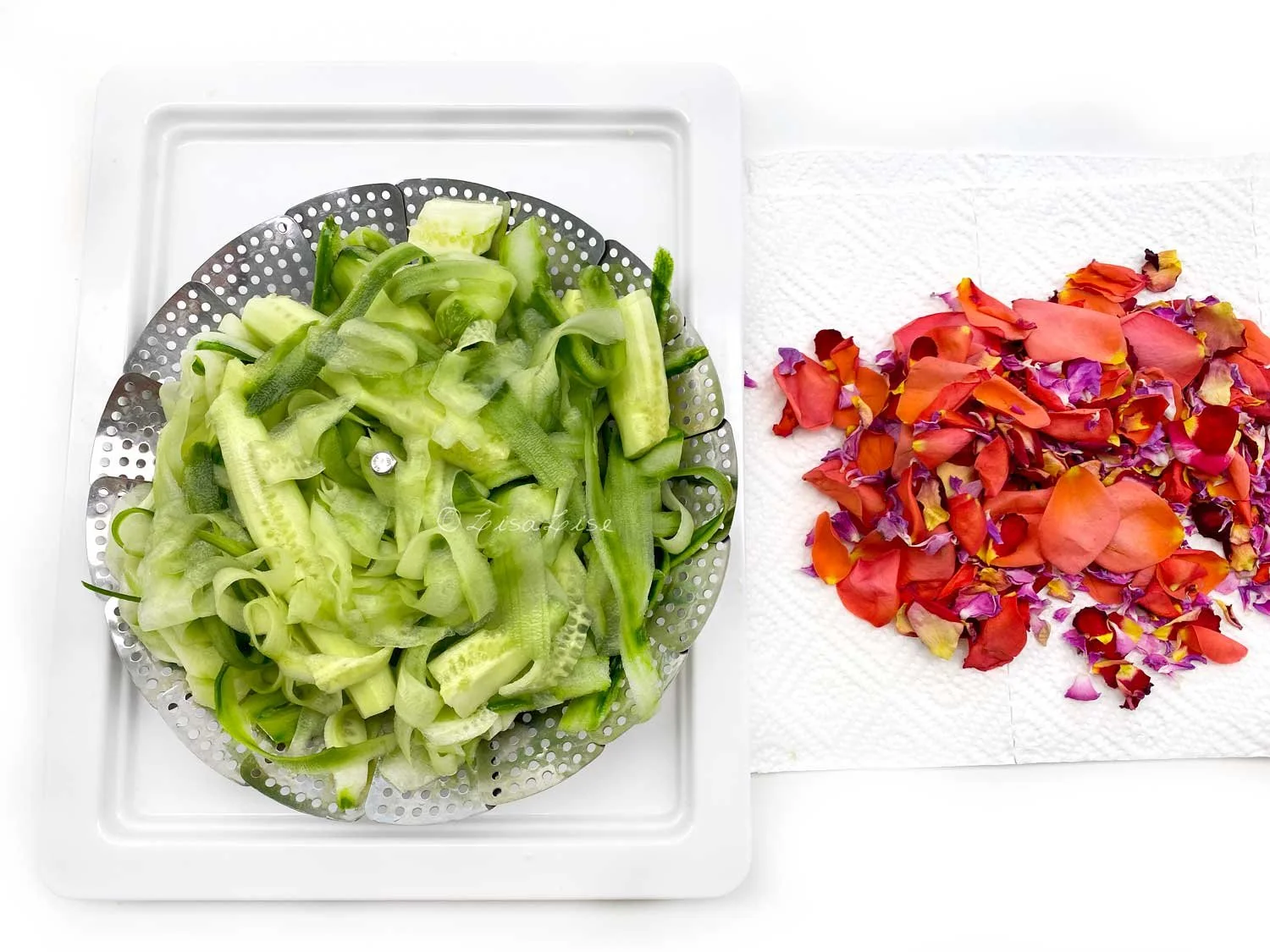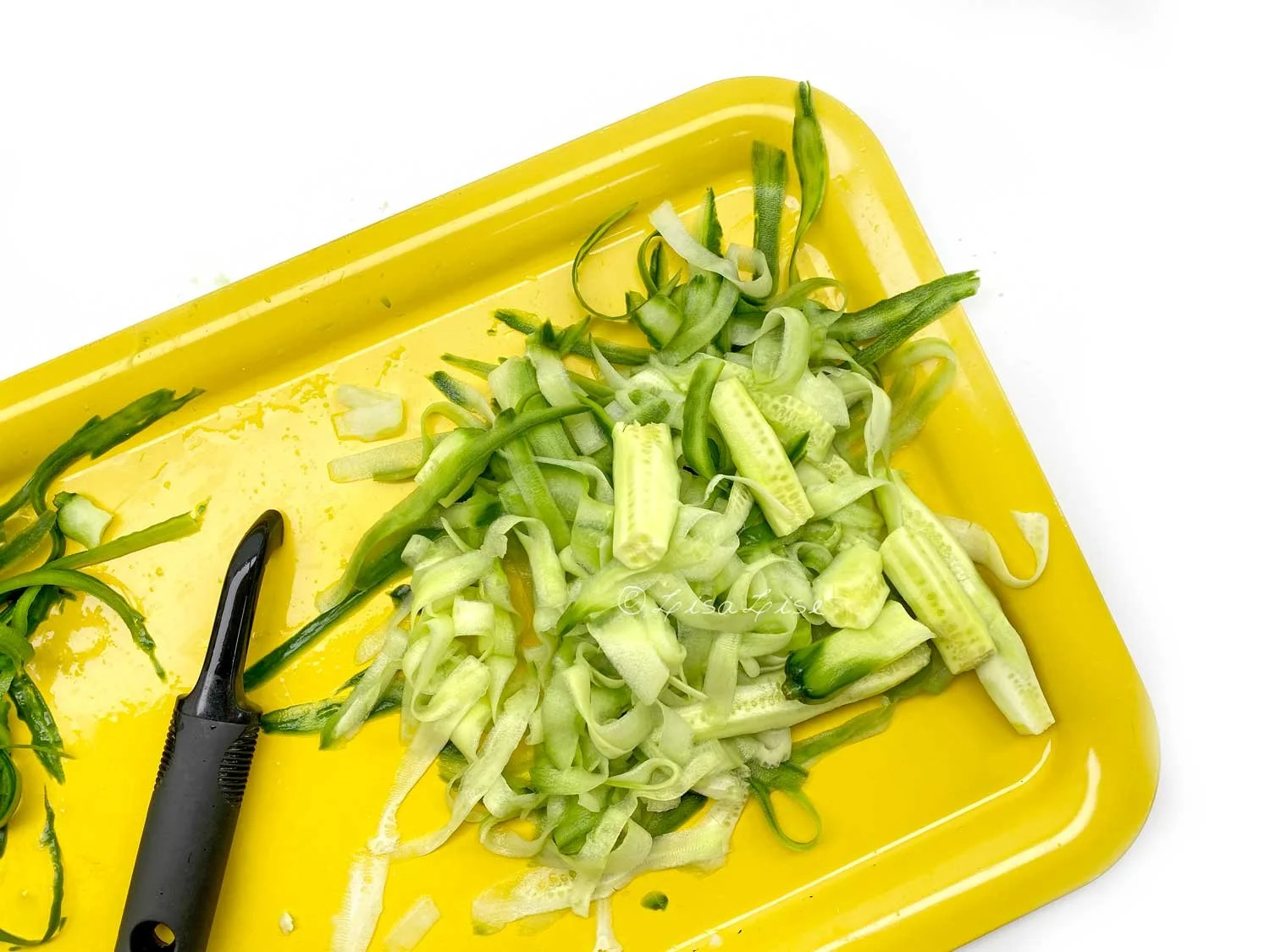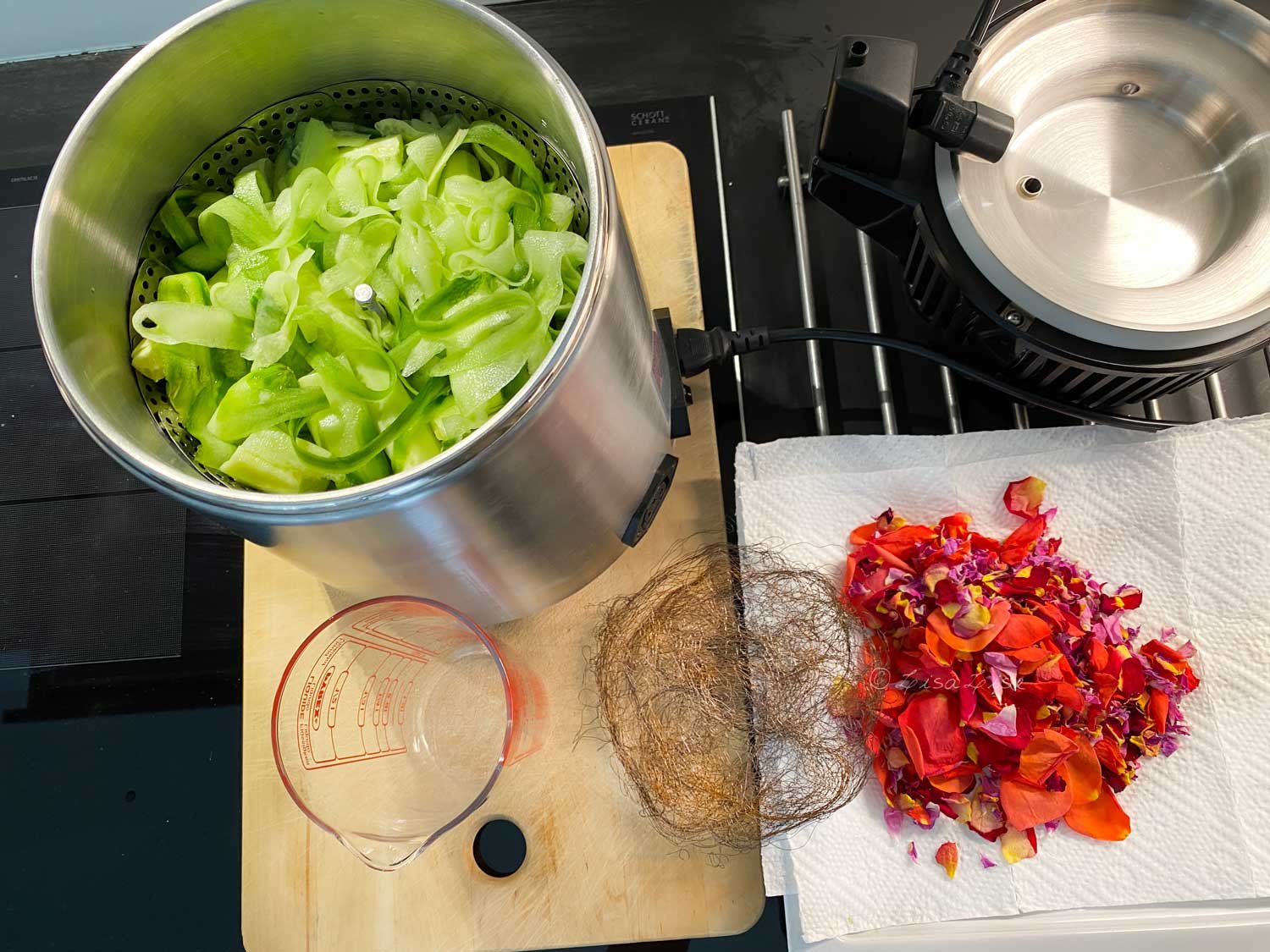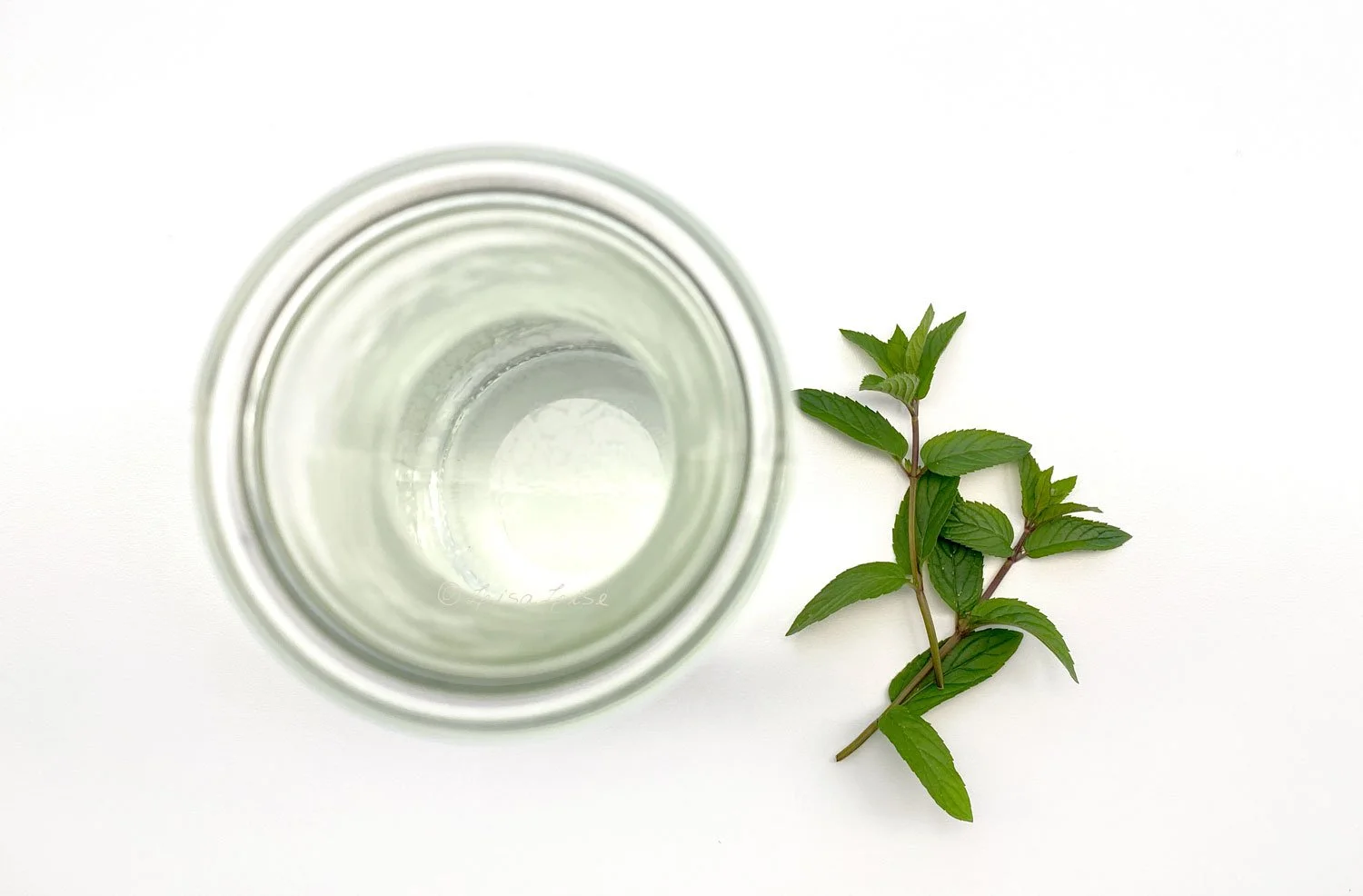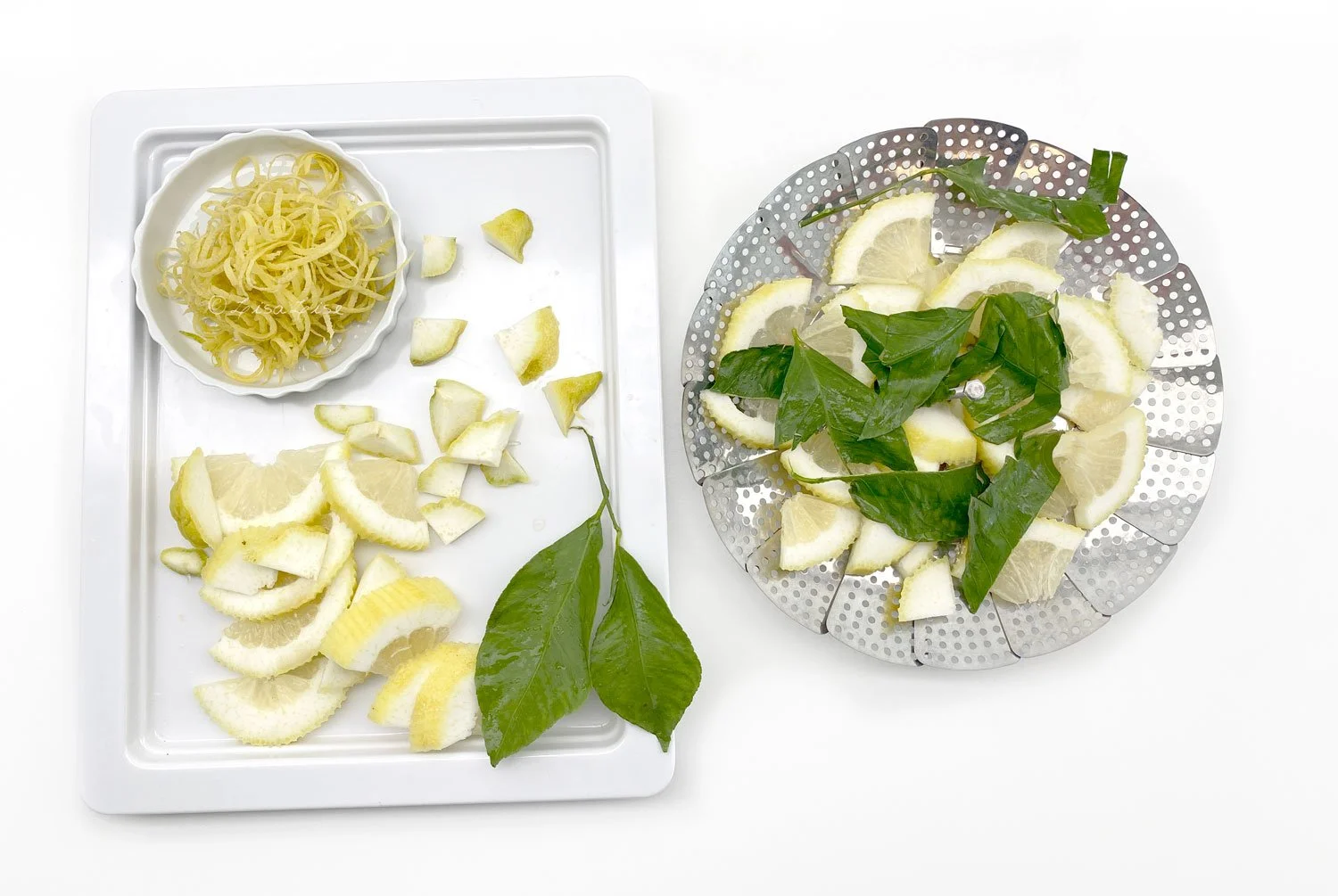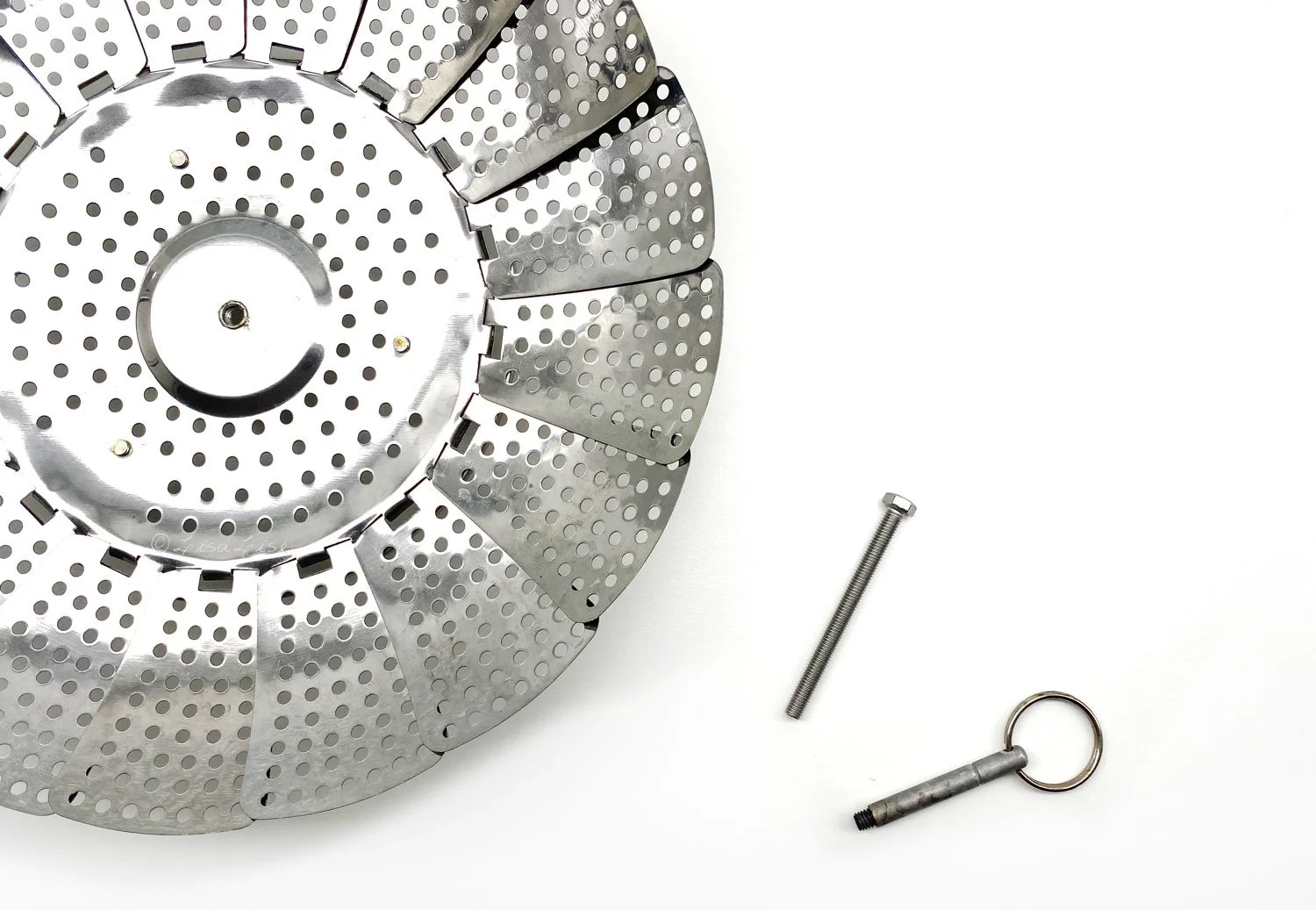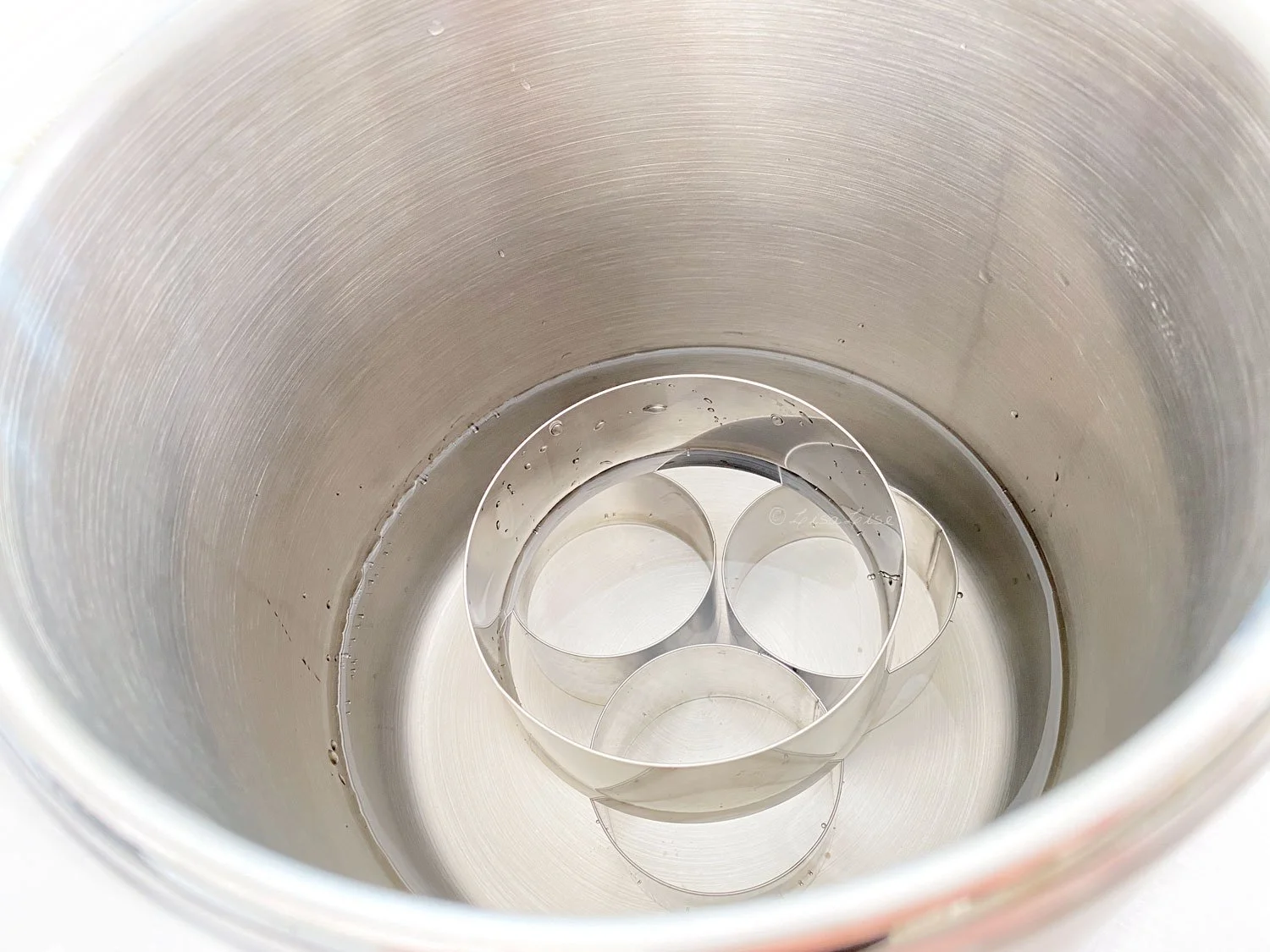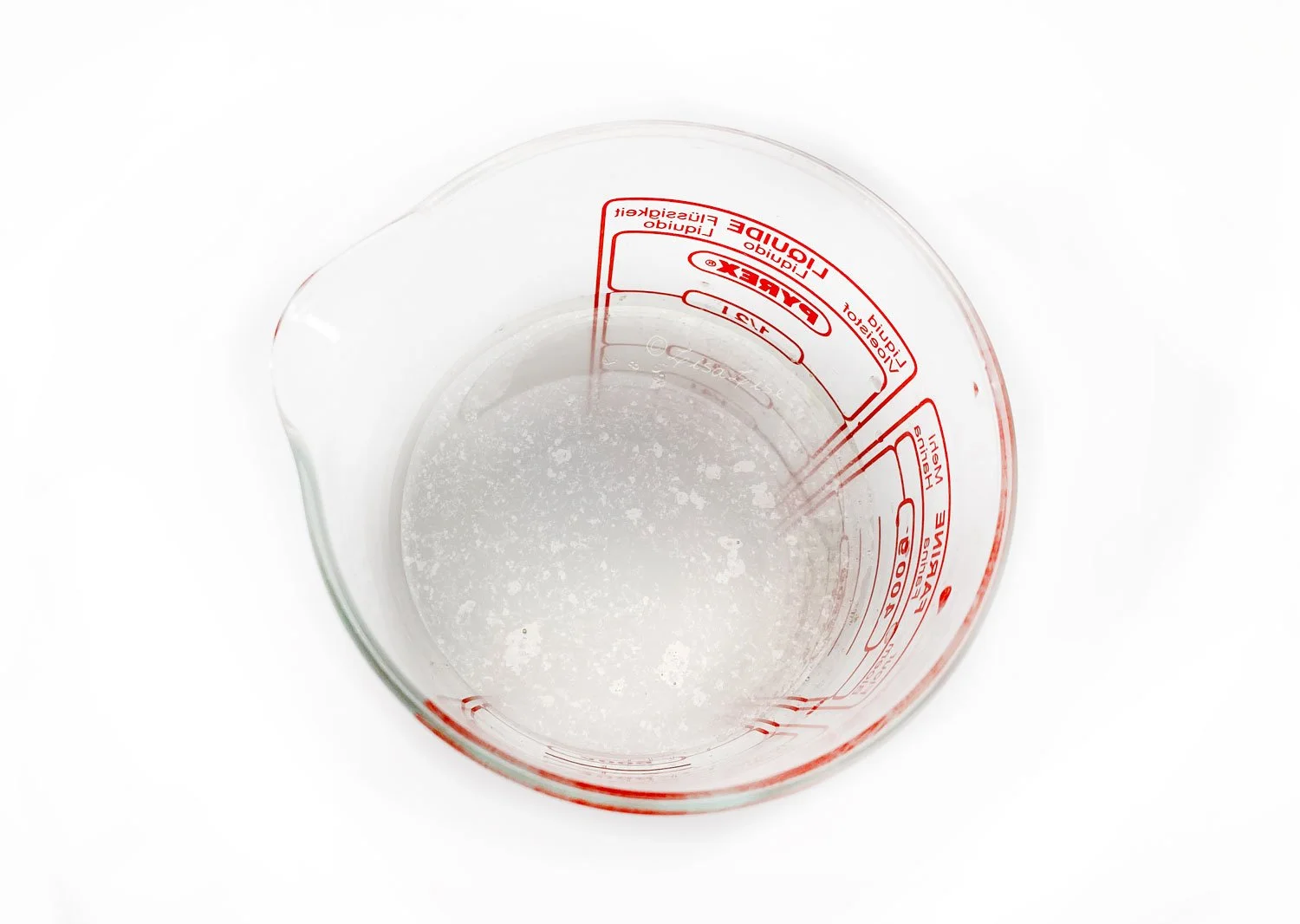Cucumber and Rose Hydrosol
Lise
This may seem like an odd pair for a distillate, but it worked beautifully. Today, I’m going to walk you through the steps I took to make this hydrosol.
Combining Raw Materials in a Distillate
Mixing ingredients like this is called co-distilling. There are really no rules for co-distillation. You can mix as many different things as you please. A colleague of mine combines both herbs/plants and fruits/vegetables to create stunning results. If you forage for ingredients, it can be a great way to make use of smaller amounts, but co-distillation also allows you to maximise the synergy of the ingredients you are working with.
This particular combo came about quite by chance actually. As I was preparing to make a cucumber hydrosol last summer (while still in Denmark), my lovely neighbour (who knew I both love and use roses for my skincare) popped by with a small basketful of freshly picked roses from their garden. It was a mix of different kinds of roses and the total amount was as you see above. They were quickly incorporated into my distillate.
Small Batch Preparation
This distillation (as all of my previous ones) was made in my Air Still. Preparation of the raw materials is pretty much the same as it is for making your own glycerites; use quality (organically grown) ingredients in prime condition. Discard any bits that are damaged.
For this small batch (about 500 ml yield), I used 2 cucumbers and a handful of roses.
Even though I use organic, I remove some peel from the cucumbers. This is just my preference - you don’t have to remove the peel. I got into the habit of removing the peel from cucumbers when cooking (they are generally more bitter tasting than the flesh) and this just carried over to my distillation.
Layering Ingredients
For this distillation, I placed the heaviest ingredients on the bottom. This isn’t a rule — you can combine and layer any way you like. I have had success placing heavy slices of pineapple on top of a bed of light herbs as well as the other way around.
Pictured below, cucumber in place, ready for roses and then my ‘copper birds nest’ on top before placing the lid on.
For details on the still and all the bits I use (and how I have modified them), please see this post.
How the Hydrosol Turned Out
Both the function and fragrance of this hydrosol turned out as a lovely marriage of rose and cucumber - The fragrance was not easy to distinguish as either one ingredient or the other. It was both fresh and floral - and it felt both refreshing and soothing to use. As the liquid matured, so did the fragrance. This is one hydrosol that got compliments from my husband every time I used it.
Do Tell
Have you ever combined ingredients to make a hydrosol? Which were your favorites?
Check below for more posts about hydrosols and distillates on this blog

